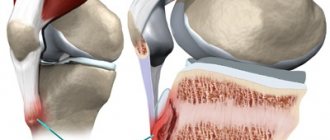Pain in the upper part of the stomach is a dangerous symptom that is a harbinger of many dangerous diseases. There are many reasons for this condition to occur. Unpleasant sensations can overtake you suddenly and pass quickly, or they can annoy you for a long time.
Despite the intensity and accompanying symptoms, any health problems must be addressed. Abdominal pain can be an indicator of various conditions, which we will discuss below.
Causes of epigastric pain
Functional dyspepsia
Epigastric pain is provoked by errors in the diet, abuse of fast food and dry food.
Unpleasant symptoms usually occur during stress, travel and time zone changes. The pain is aching or nagging and has moderate intensity. Less commonly, patients report a sharp stabbing sensation in the upper abdomen. Such manifestations are observed periodically under the influence of predisposing factors. Along with the pain syndrome, a feeling of heaviness and fullness in the epigastrium, nausea, and heartburn increase. Characteristic belching is air, which develops as a result of aerophagia. With functional stomach disorders, gastrointestinal symptoms are accompanied by disorders of the autonomic nervous system. Characterized by pallor and coldness of the extremities, increased sweating, increased heart rate.
Gastritis
Gastritis with high acidity is characterized by sharp pain in the upper abdomen, which intensifies 20-30 minutes after eating and lasts for several hours. With gastritis with low acidity, there is a constant dull or aching pain that is not associated with food intake. After finishing a meal, patients complain of heaviness in the epigastrium, nausea, and belching.
In the acute form of gastritis or exacerbation of the chronic process, pain appears sharply against the background of errors in diet and alcohol intake. The pain syndrome can be very strong, reminiscent of an “acute abdomen”. Chronic gastritis is characterized by periodic moderate pain, accompanied by changes in stool, belching, and heartburn. Due to impaired iron absorption, pale skin, weakness, and dizziness occur.
Peptic ulcer
A stomach ulcer is manifested by severe pain in the epigastric region, which appears immediately after eating food, accompanied by nausea and heartburn. To relieve discomfort, patients induce vomiting. With a complication of a peptic ulcer - perforation of the ulcer - a “dagger pain” is suddenly felt in the upper abdomen. The person lies motionless with his legs pulled up to his stomach, since the pain intensifies with movement.
Pain in the upper abdomen
Pyloric stenosis
In the compensated stage, dull and bursting pain occurs in the epigastrium after a heavy meal, combined with a feeling of heaviness in the stomach and belching. With decompensation of pyloric stenosis, constant severe pain in the upper abdomen is noted, worsening after finishing eating. Vomiting begins with foods eaten the day before, after which the state of health improves for a short time.
Pancreatitis
In the acute course of pancreatitis, the pain is localized in the epigastric part and left hypochondrium, and has a girdling character. Unpleasant sensations intensify when lying on your back. The appearance of a painful attack is typical for heavy drinking. The pain is accompanied by repeated vomiting, which does not bring relief to the patient. Possible increase in body temperature, slight yellowness of the sclera.
Chronic pancreatitis is characterized by discomfort in the upper abdomen, occasionally radiating pain to the heart area. When following a diet, pain is rarely a concern; it is moderate and short-lived. Pancreatitis occurs with exocrine pancreatic insufficiency, so the pain syndrome is accompanied by steatorrhea, lienterea, and flatulence.
Cholecystitis
With inflammation of the gallbladder, pain is localized in the upper abdomen and right hypochondrium. Symptoms are associated with consumption of fatty foods. In chronic cholecystitis, pain in the epigastrium is aching in nature, accompanied by heaviness in the abdomen and changes in stool. Acute cholecystitis is characterized by sharp, paroxysmal pain in the upper abdominal cavity. The clinical picture is complemented by vomiting with bile, yellowness of the skin and mucous membranes.
Hernias
A diaphragmatic hernia is manifested by severe pain in the retrosternal region and epigastrium, caused by compression of the stomach in the hernial sac. The symptom is provoked by physical activity, prolonged coughing, and vomiting. Increased pain occurs when the body bends forward and strains. In addition to the pain syndrome, constant heartburn is a concern, which gets worse after eating and when lying down. With large diaphragmatic hernias, shortness of breath is observed.
A rarer cause of epigastric pain is a hernia of the upper part of the linea alba. Characterized by constant aching sensations in the upper abdominal cavity, which do not have a clear localization. Symptoms are aggravated by physical activity and straining. A typical symptom of this pathology is the appearance of sharp pain when trying to raise your legs while lying on your back. Occasionally, a protrusion of soft elastic consistency can be felt in the middle of the epigastric region.
Intestinal infection
Epigastric pain is characteristic of food poisoning, which occurs with gastritis or gastroenteritis syndrome. They are often caused by rotaviruses, enteroviruses, and staphylococci. Symptoms appear within a few hours to 1-2 days after eating food of questionable quality. Suddenly, severe pain occurs in the abdominal cavity with nausea and repeated vomiting. Then comes watery diarrhea.
Neoplasms
With benign formations (polyps), periodic dull pain develops in the upper abdomen, not associated with food or other external factors. Stomach cancer is characterized by constant increasing pain in the epigastrium, which is not relieved by conventional analgesics and antispasmodics. In addition to pain, there is a deterioration in appetite and a change in taste preferences, as a result, patients rapidly lose weight.
Respiratory damage
Pain in the upper abdomen occurs with lower lobar lobar pneumonia, dry and exudative pleurisy. The irradiation of pain is determined by the proximity of the organs of the thoracic and abdominal cavities and their common innervation. The pain is dull or aching in nature, intensifies with deep breaths, coughing, and turning the body. The symptom is combined with high fever, shortness of breath, and lag of half of the chest when breathing.
Myocardial infarction
Severe epigastric pain occurs with the abdominal form of myocardial infarction. The pain syndrome develops suddenly, often preceded by emotional shock. The pain is accompanied by severe weakness. The skin becomes pale and covered in cold sweat. The pain is so severe that the patient is in a pre-fainting state.
Intercostal neuralgia
With damage at the level of the lower ribs, pain may radiate to the epigastric zone. The sensations are sharp and shooting, localized on one side. They occur when the body is in an awkward position, after bending or turning the body, or after staying in one position for a long time. The pain intensifies when you feel the intercostal spaces or try to bend in the opposite direction.
Complications of pharmacotherapy
A typical iatrogenic cause of upper abdominal pain is NSAID gastropathy. The disease is characterized by periodic discomfort in the epigastrium, which intensifies at night and on an empty stomach. There is a decrease in appetite, nausea, and flatulence. About 40-50% of gastropathy is asymptomatic and manifests itself with sharp pain in the projection of the stomach with the development of complications - perforated ulcers, gastrointestinal bleeding.
Rare causes
- Damage to the spleen
: splenomegaly, abscess or cyst of the spleen, perisplenitis. - Rare gastric diseases
: acute dilatation of the stomach, gastric volvulus. - Kidney diseases
: pyelonephritis, renal colic. - Vascular pathologies
: portal vein thrombosis, abdominal aortic aneurysm, ischemic abdominal syndrome. - Intoxication
: nicotine, morphine, heavy metals (lead, mercury). - Psychogenic conditions
: hysteria, masked depression, somatoform disorder.
Types of pain and symptoms
Abdominal pain is possible in the following manifestations:
- spicy. Severe pain that occurs suddenly;
- chronic. The pain intensifies gradually, in many cases over a month or more;
- chronically recurrent. The pain occurs periodically - it appears suddenly and just as suddenly goes away, appears again after a certain period of time;
- tonic. The main characteristic of such pain is strong muscle tone and the appearance of compactions. Pain may also be accompanied by spontaneous contraction of muscle fibers;
- clonic pain – supplemented by rhythmic muscle spasms;
- burning (“cuts”, “aches”) pain – reminiscent of a feeling of hunger.
The pain can be localized in the umbilical region, the upper part of the peritoneum (hypochondrium), below the navel on the right or left, and the entire abdomen can also hurt.
A patient complaining of a stomach ache will exhibit different symptoms. Pain may be characterized by:
- colic – paroxysmal stabbing sensations;
- spasms - spontaneous contractions of muscle fibers with simultaneous blanching of the skin. In some cases (depending on the type and specificity of the disease), a painful abdomen may be accompanied by fever and bleeding;
- strong burning sensation;
- feeling of fullness. For example, a feeling of bulging in the lower back may indicate problems with the colon;
- cyclicality (either increasing or decreasing pain intensity);
- increased gas formation;
- itching in the anal area;
- discomfort in the abdomen during a period of rest, disappearing during movement. This symptom may indicate a circulatory disorder in the abdominal cavity.
Diagnostics
During a physical examination, the doctor determines areas of hyperesthesia and performs superficial and deep palpation of the epigastric zone. The variety of causes of pain in the upper abdomen requires the gastroenterologist to use a whole range of laboratory and instrumental methods. The most informative tests for diagnosis are:
- Ultrasound of the abdominal cavity.
A simple and non-invasive method that detects signs of inflammatory processes, ulcerative defects and neoplasms in the epigastrium. Using ultrasound, the doctor evaluates the anatomical and functional features of the gastrointestinal tract, confirms or excludes typical diseases (calculous cholecystitis, pancreatitis, hernia). - X-ray methods.
A survey radiograph is not very informative, so radiography with oral contrast is used for examination. The study is necessary to detect ulcerative defects, pyloric stenosis, and diaphragmatic hernia. Using this method, the motor function of the gastrointestinal tract is assessed. - EFGDS.
The most informative method that allows you to visualize inflammatory and erosive changes in the walls of the esophagus, stomach and duodenum. EGD with biopsy is used for the differential diagnosis of ulcers, benign and malignant neoplasms of the gastric zone. - Laboratory methods
. The standard complex includes clinical blood and urine tests, coprogram, and glucose level measurement. To identify gastritis and peptic ulcers, a study of gastric juice and a rapid urease test for H. pylori are informative. To exclude chronic bleeding from the gastrointestinal tract, the Gregersen reaction is performed. - Additional Research
. To confirm the diagnosis of hyperacid gastritis, intragastric pH-metry is required. The functional abilities of the stomach are assessed using electrogastrography and radionuclide scintigraphy. A CT scan is performed for detailed visualization of the abdominal organs.
In case of sharp pain reminiscent of the symptoms of an “acute abdomen”, the patient must be examined by a surgeon. If extra-abdominal processes are suspected, consultations with specialized specialists are prescribed: cardiologist, pulmonologist, neurologist. Patients with suspected psychogenic causes of epigastric pain should be examined by a psychiatrist.
Gastroscopy
When to see a doctor
In many cases, abdominal pain does not mean that the patient is sick with something. The pain may be caused by overeating, stress or emotional distress. In any case, a person wonders: why does it hurt? Here are symptoms that may indicate that you are sick:
- intense pain lasts continuously for more than six hours;
- the localization of pain is in the right part of the lower abdominal cavity;
- the peritoneum begins to hurt immediately after eating;
Treatment
Help before diagnosis
If epigastric pain suddenly appears, you should not take painkillers before visiting a doctor, so as not to blur the clinical picture. If a chronic gastrointestinal disease is diagnosed, to reduce pain it is necessary to adhere to dietary recommendations and avoid provoking factors. In case of food poisoning, you need to rinse your stomach and use sorbents.
Conservative therapy
Treatment begins with non-drug measures: diet therapy, normalization of the daily routine and abandonment of bad habits, elimination of risk factors for the underlying disease. Medicines are selected only after a full diagnosis and identification of the root cause of the pain syndrome. The main groups of medications that are prescribed for pain in the upper abdomen:
- Painkillers
. In the absence of medicinal gastropathy, medications from the group of non-steroidal anti-inflammatory drugs are used to relieve pain. They are supplemented with antispasmodics and prokinetics, which normalize gastrointestinal motility and eliminate discomfort. - Enzymes.
Preparations of gastric juice and digestive enzymes are used for pain caused by malabsorption and maldigestion. Their long-term use improves a person’s well-being and eliminates symptoms of nutritional deficiency. - Antisecretory agents
. Drugs that reduce the acidity of gastric secretions quickly eliminate pain caused by hyperacidity. They promote the healing of defects in the gastric mucosa. - Antibiotics
. Specific three- and four-component regimens with antibacterial drugs are indicated for the eradication of H. pylori. Antibiotics are recommended for bacterial pneumonia and pleurisy, exacerbation of cholecystitis.
Kidney stone disease
This is a disease in which stones (calculi) form in the ducts and glands of the kidneys. This is a fairly common disease. Kidney stones usually do not cause symptoms until they begin to “move” and interfere with the flow of urine.
Kidney stone disease
If small stones get into the peritoneal fluid, the pain is especially severe (colic), the person sweats, gets cold, and a high temperature may rise. In such cases, the patient is hospitalized, given painkillers and antispasmodics, and given intravenous fluid infusions. If signs of infection appear, antibiotics are prescribed. If stones cannot be removed with medications, surgery is performed.









